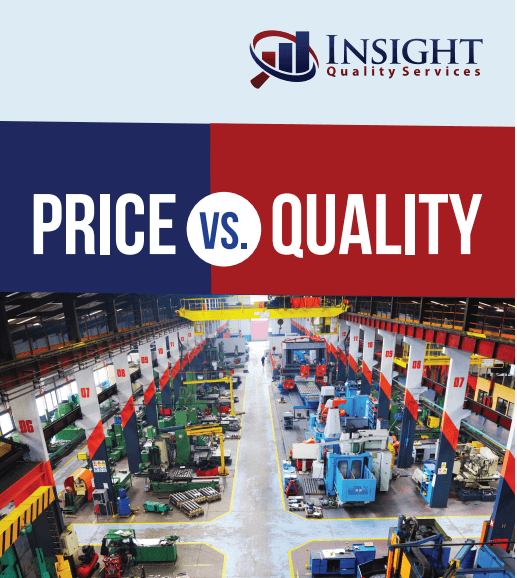We all know it when we see it. A quality product tends to be well designed and constructed, serve the purpose for which it was purchased, and satisfy—or exceed—our expectations. But understanding and fulfilling such subjective parameters is a complex, perennial question for manufacturers and sellers.
In this article, we’ll unpack what product quality really is, explore why it’s important, and share some insider tips for ensuring great quality within your business.
Table of Contents
What is Product Quality?

At its most basic, product quality refers to how well a product meets expectations. Defining quality can be tough, because it’s based on consumer perceptions, which are in turn influenced by the market, advertising, price range, and personal preferences.
The expectations a person has for a simple plastic pen are not the same as their expectations for a luxury fountain pen. Their requirements and the perceived value of each product is different, and thus how the product might meet or exceed expectations is different too.
That said, “high-quality” products do tend to share universal traits. In general, items with good product quality:
- Perform well
- Are reliable and don’t wear out quickly
- Are consistent in terms of manufacturing
- Look appealing and are well packaged
- Are intuitive to use
- Meet the customer’s expectation of what the product should be
Why is Product Quality Important?

Product quality—perceived and actual—has a significant impact on customer satisfaction and loyalty. In short: your customers’ perception of your product quality influences their initial purchase decisions, their likelihood of buying from your brand in the future, and their willingness to spend more on your “high-quality” product as compared to lower-quality alternatives.
In big-picture terms, customer loyalty and retention play an outsized role in overall profitability. Increasing customer retention rates by just 5% increases profits by 25% to 95%. And given those percentages, producing sub-par products is a staggeringly foolish risk.
When a product falls short of customer expectations, it can quickly devolve into an expensive spiral of refund requests, tanking brand reputation, and customers abandoning you in droves. Remember the New Coke fiasco of 1985?
Ultimately, no one’s perception is more important than that of your customers. It’s their perspective that will determine the level of your success or failure.
Luckily, the opinions of your consumer base aren’t completely out of your control. There are a number of strategies for addressing and managing product quality. Let’s take a look at a popular one: TQM.
The Basics of Total Quality Management

Total quality management (TQM) is a management approach that can keep an organization on track for product quality goals. TQM makes an organization-wide effort to improve products, processes, and culture by emphasizing the following principles:
• Putting the customer first. Ultimately, the customer determines your level of quality. Whatever efforts you put into improving your product or your processes, it is only worthwhile if the customer perceives and appreciates it.
• Employee involvement. TQM values empowering employees to be an active part of the quality control process.
• Process thinking. Identifying, understanding, and monitoring the processes that take your product from start to finish are fundamental elements of establishing TQM.
• Integrated Systems. Your company might be comprised of many differently structured departments, and it’s important to make sure they are all connected, communicative, and working together.
• Strategic planning. Having a plan to achieve your business’s mission and goals is critical to reaching your desired quality standards.
• Continual improvement. You want to always be analyzing data, coming up with creative solutions, and collaborating with your employees on how to improve.
• Factual decision making. Collecting as much data as possible on your company’s performance is going to help you make educated decisions that best serve your business.
• Communication. Proper communication ensures that your team is all on the same page, that nothing is forgotten or falling through the cracks, and that you’ll be able to steadily move towards your goals.
TQM methodology helps ensure customer satisfaction, which is a huge component in determining the quality of a product.
5 Tips for Achieving Great Product Quality

Aside from exploring and implementing the ideas behind TQM, how can a company ensure great product quality?
1) Understand the Market
Does your brand have a strategy that will distinguish it from the competitors? What’s the perfect price point? What do customers expect from a product similar to yours? Understanding similar products and businesses in the market is going to be a huge asset in learning what expectations you need to meet or exceed with your quality control measures.
2) Provide Great Customer Service
Offering generous after-sale support makes a big difference in how customers perceive your product. For instance, if a user discovers they’re unable to understand the operating instructions of your product, their opinion of your quality and usability can quickly plummet. This can be countered with friendly, accessible support options.
While great customer service doesn’t always make up for a poor quality product, bad customer service absolutely has the power to ruin the experience of a customer who might otherwise have enjoyed your product. Establish customer service objectives for your team, and consider conducting a customer service audit. The work doesn’t end when the sale is complete.
3) Get to Know Your Customer Base
What do your customers want? Are you delivering it? Do they keep coming back for more? Even more importantly, why do they keep coming back for more?
Once you identify the traits that make customers decide your product is of good quality, you can focus on perfecting and marketing those elements. There isn’t much value in developing aspects of your products that the majority of your client base find only slightly important. You want to cater to your audience, and to do that, you have to really know them.
4) Focus on Design
Design is particularly critical to product quality. Some elements of sales will always be out of your control, but never your product. Even the best manufacturer cannot improve your original concept, function, and design. A well-designed and executed product will attract and delight customers, make marketing easy, and keep your loyal base coming back for more.
5) Establish a Quality Management System
A perfect product design means nothing if your products are made inconsistently and don’t match your specifications. As such, it is vital that you do proper vetting of potential manufacturers, including conducting supplier audits. Additionally, implementing your own quality control measures, such as third-party quality inspections, can help you assess manufacturer performance.
Insight Quality Services

Insight Quality Services helps consumer product importers conduct product inspections and quality audits so they can get the best results from their manufacturing partners.
Learn more about our product inspection or quality audit services or download our free guide on price vs. quality to assist you in your product quality journey.





0 Comments